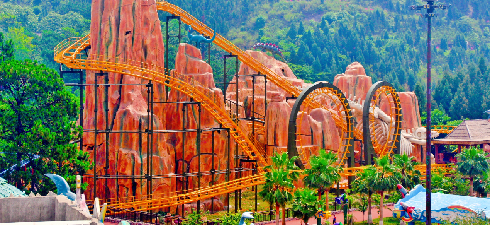- Albanian
- Arabic
- Belarusian
- Bengali
- Czech
- English
- French
- German
- Hebrew
- Hungarian
- Indonesian
- irish
- Italian
- Japanese
- kazakh
- Persian
- Russian
- Thai
- Uzbek
- Vietnamese
Exploring the Mathematical Equations Behind Roller Coaster Graphs and Their Curves
Understanding Roller Coaster Graph Equations The Mathematical Ride
Roller coasters are not just thrilling rides; they are also impressive feats of engineering that showcase the beauty and application of mathematics. The design of roller coasters is largely influenced by physics principles, and the equations governing their graphs play a pivotal role in determining the ride's dynamics. In this article, we will explore the equations related to roller coaster graphs, how they correlate with the real-world design of roller coasters, and the implications these equations have on the overall experience.
Curvilinear Motion and the Roller Coaster Design
At the core of roller coaster design is the concept of curvilinear motion. As the coaster car moves along a track, its path can be represented by equations that describe its position, velocity, and acceleration over time. The track's shape can be modeled using polynomial functions, trigonometric functions, and even parametric equations. These mathematical representations allow engineers to predict how the coaster will behave at any point along the ride.
For example, consider a simple parabolic track, which can be represented by the equation of a parabola
\[ y = ax^2 + bx + c \]
In this equation, \(a\), \(b\), and \(c\) are constants that define the curvature of the roller coaster. The value of \(a\) determines the steepness or flatness of the curve a positive \(a\) value creates a concave upward shape, while a negative \(a\) value creates a concave downward shape. Engineers can use this information to design hills and drops, ensuring they create an exhilarating experience while maintaining safety standards.
Understanding Speed and Acceleration
Another vital aspect of roller coaster graphs involves the relationship between speed and acceleration. For a coaster descending a hill, the acceleration can be defined using the derivative of the position function, which provides insight into how the coaster's speed changes over time. For a given position function \(s(t)\) that represents the height of the coaster at time \(t\), the speed \(v(t)\) can be found as follows
\[ v(t) = \frac{ds(t)}{dt} \]
roller coaster graph equations

Acceleration, on the other hand, can be determined by taking the second derivative of the position function
\[ a(t) = \frac{d^2s(t)}{dt^2} \]
These equations reveal not only how quickly the coaster moves but also how sharply it can change speed—factors that contribute to the overall thrill of the ride. Engineers must carefully analyze these derivatives to ensure that the roller coaster provides both excitement and safety.
G-forces and Rider Experience
The experience of riding a roller coaster isn't merely defined by speed and drop; it is also influenced by the G-forces exerted on the riders. Roller coaster designers strive to create a balance of exhilarating G-forces, which can be calculated using the equations of motion.
The net force acting on a rider can be illustrated as follows
\[ F = ma \]
where \(m\) is the mass of the rider, and \(a\) is the acceleration experienced at any point on the track. This equation highlights the importance of managing G-forces to prevent discomfort. A G-force that is too high can lead to a negative experience, whereas a well-designed curve allows for thrilling moments without compromising rider safety.
Conclusion
In conclusion, the world of roller coaster graph equations is a fascinating blend of mathematics and engineering. These equations not only guide the design process but also enhance our understanding of the physical principles that govern the dynamics of roller coasters. From calculating the curvature of the track to analyzing speed, acceleration, and G-forces, mathematics forms the backbone of roller coaster creation. Ultimately, the graphical representations of these equations allow designers to create rides that deliver excitement while ensuring safety, making roller coasters a symbol of perfect harmony between math and thrill.
-
Flume Ride-Hebei Zhipao Amusement Equipment Manufacturing Co., Ltd.|Thrilling Water Attraction&Customizable DesignJul.30,2025
-
Flume Ride - Hebei Zhipao Amusement Equipment | Water Coaster, Thrilling DescentJul.30,2025
-
Flume Ride - Hebei Zhipao | Thrilling Water AttractionJul.30,2025
-
Flume Ride: Thrilling Water Attraction by Hebei Zhipao|Log Flume Manufacturers&Flume Ride DesignJul.30,2025
-
Flume Ride-Hebei Zhipao Amusement Equipment Manufacturing Co., Ltd.|Thrilling Water Coaster, Safe DesignJul.30,2025
-
Flume Ride-Hebei Zhipao Amusement Equipment Manufacturing Co., Ltd.|Thrilling Water Attraction, Safe DesignJul.30,2025
